Email clients, like Outlook, allow you to easily check your emails not going to web-interface. This tutorial will help you to configure your Namecheap Private Email account in Microsoft Outlook 2013.
Private Email service supports autodiscover feature which allows setting up email account automatically in Outlook.
NOTE: before setting up email account this way, make sure you already have required DNS records and mailbox created.
For automatic email account setup you need to do the following:
1. Open Outlook, select tab File >> Add Account:

2. Check the option E-mail Account and fill in the corresponding fields:
- Your Name: the name you would like the recipients of your emails to see
- E-Mail Address: your full Private Email address
- Password: password for your Private Email account
Make sure you do not have blank spaces in it.
NOTE: if by any chance you do not remember your password, you can easily reset it using the following
tutorial.
3. Once all the fields are filled, click Next:
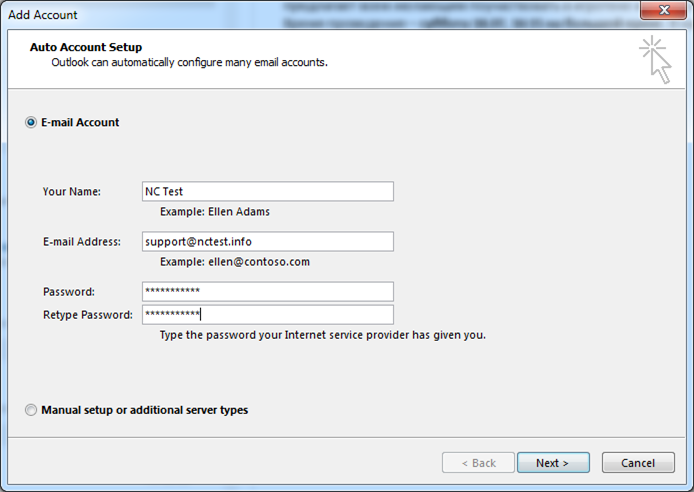
NOTE: if any warnings appear, disregard them and feel free to proceed.
If this option fails for some reason, try to follow the steps from scratch. If it does not help you can also try to set up email account manually.
In order to set up your email account in Outlook manually, complete the first step which is described above and then follow the instructions below:
1. Check the option Manual setup or additional server types and click on Next:
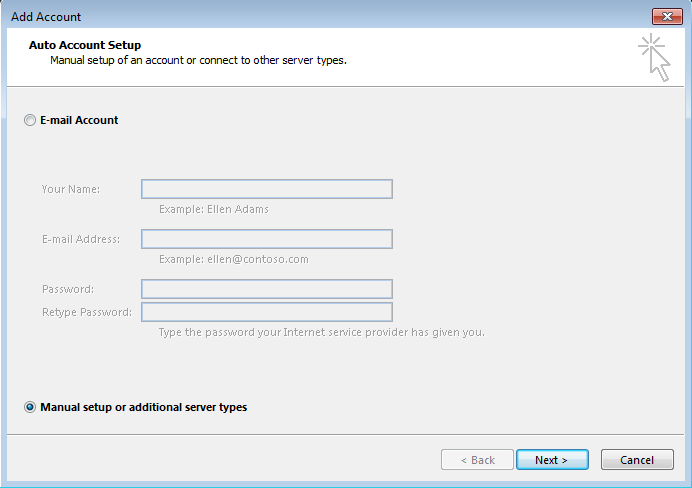
2. Select POP or IMAP and click on Next:
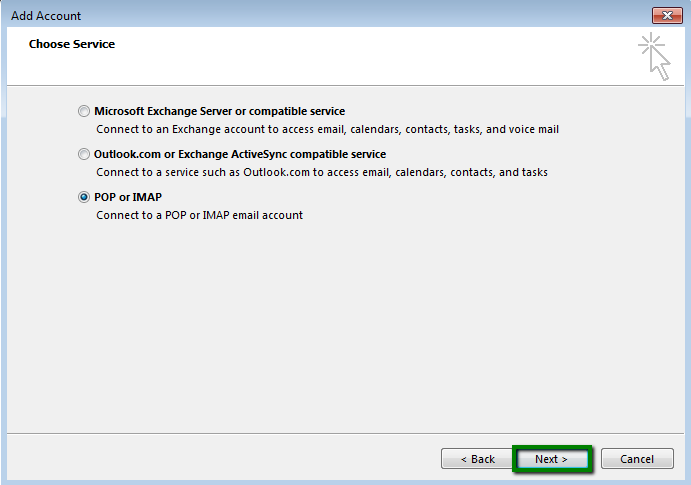
3. Fill out the corresponding fields:
- Your Name: the one you wish to have for this account
- Email Address: full email address
- Account Type: IMAP or POP3
- Incoming and Outgoing mail server (SMTP): mail.privateemail.com (for all subscriptions)
- User Name: full email address
- Password: password for this mail account
- Require logon using Secure Password Notification (SPA) should to be unchecked

4. Once done, click on More settings in the lower right corner of the window.
In the Outgoing Server tab, checkmark the option My outgoing server (SMTP) requires authentication >> Use same settings as my incoming mail server:
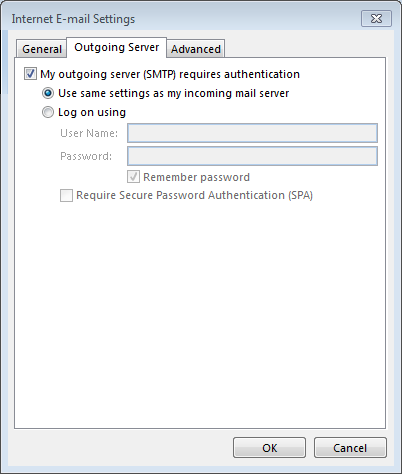
5. In the tab Advanced configure port settings as follows:
- IMAP: port 993 for SSL or port 143 for TLS
- POP3: port 995 for SSL
- SMTP: port 465 for SSL or port 587 for TLS

6. Once all is done, click OK to close the window and then Next to test server connection:
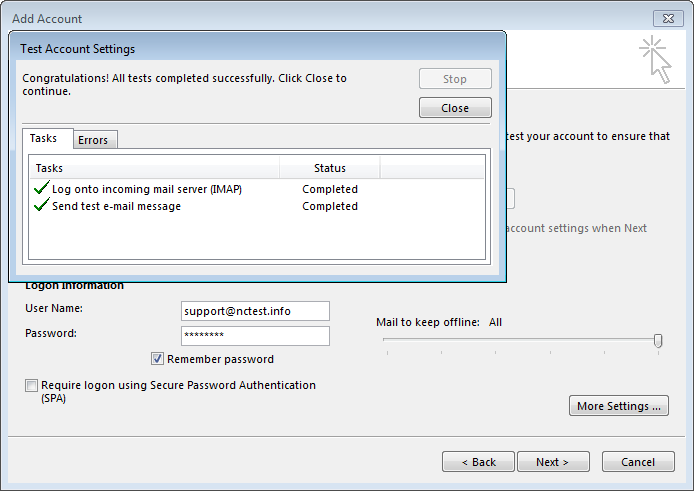
NOTE: If you added a large email account to the Outlook email client, it can cause the application pauses. In order to resolve the issue, please follow this guide.
That's it!
Need any help? Contact our HelpDesk







